When discussing Spain’s cuisine, tapas and paella come to mind but while those dishes are great (and I recommend them), Spanish gastronomy is much more diverse. It focuses on letting the ingredients do the work; the preparations use choice quality ingredients and aren’t very complicated. A good example is the Galician octopus. It’s a dish that is extremely popular with the locals using the best quality octopus cooked perfectly; the success of the dish depends on how well the octopus is cooked.
Even though most of the dishes are quite simple, this gastronomy is extremely diverse, ranging from street food to Michelin-starred restaurants. In fact, one of the regions in the north has the most Michelin-starred restaurants close to each other. You can blindly depend upon the food in Spain, and having a bad dining experience is difficult. These are some of the Spanish dishes that are easy recommendations for me.
Contents
Spanish Food
Or not to share – Casual, quick bites (tapas)
1- Pintxo
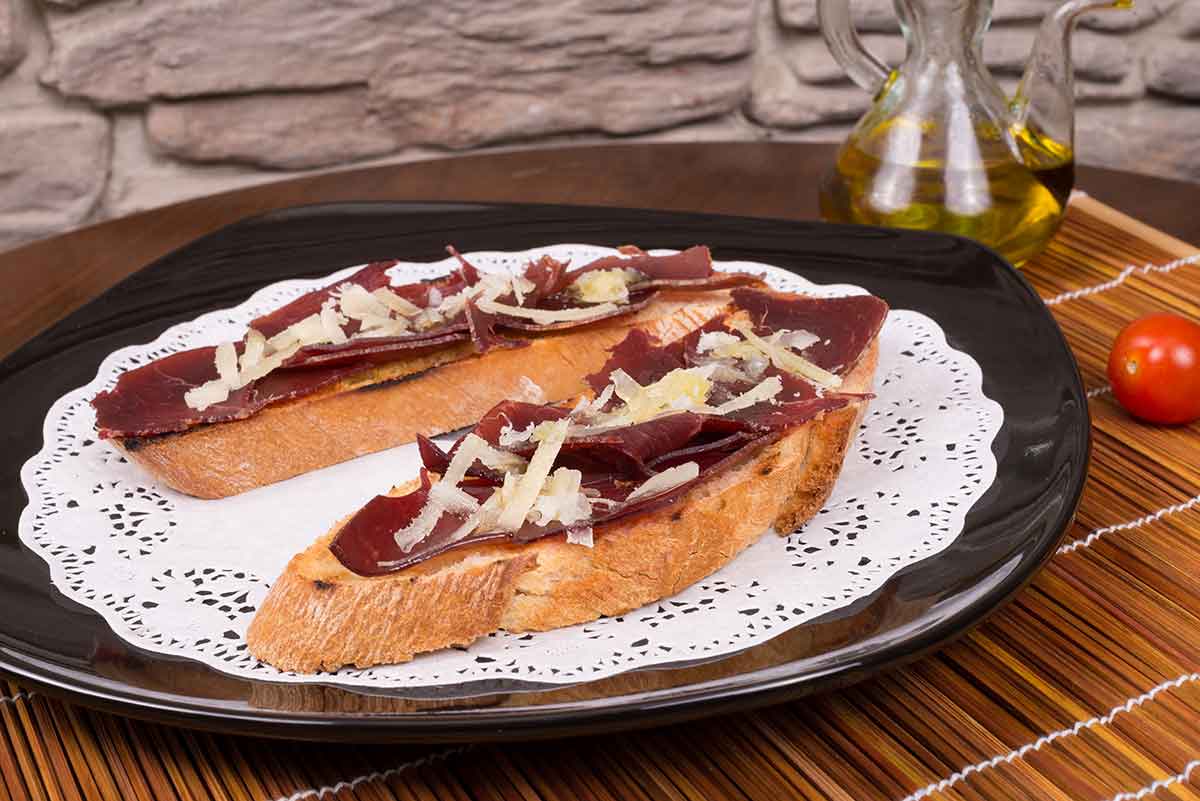
We have to give credit to the Spaniards for creating one of the best food concepts of our time.
Pintxo in the Basque region, is the word used to specify small dishes that work as a snack but for the rest of the Spain, and the world, this variety of dishes are called tapas.
Pintxos are specifically the tapas that are served on a skewer and probably the most common that you would find.
The concept of tapas has spread around the world and is something that you can experiment with.
Spain’s tapas offers sample versions of larger dishes to entice people.
Many dishes that I am going to recommend later can also be categorised as tapas because of how vast this concept it.
As for pintxos, you can find this everywhere in Spain and they are perfect to try while tapas bar hopping.
A couple of my favourites are – dátiles con bacón and gambas al ajillo.
2- Oreja a la plancha
One of the best and most underrated parts of the pig are its ears and might be something that may not sound enticing but wait till you try this dish.
Oreja a la plancha is definitely something that is going to make you fall in love with the often shunned pig’s ears.
This tapa is a traditional one from Madrid and is adored by the locals.
Because of how gelatinous the ears are, you need to cook them perfectly.
In Madrid, they are cut to small pieces and then grilled with spices to create a simple but absolutely delicious classic dish.
When grilled, the exterior becomes charred with a perfect crisp while the insides remain soft but chewy.
The texture of this dish is super addictive and is perfect washed down with a chilled beer.
3- Coca
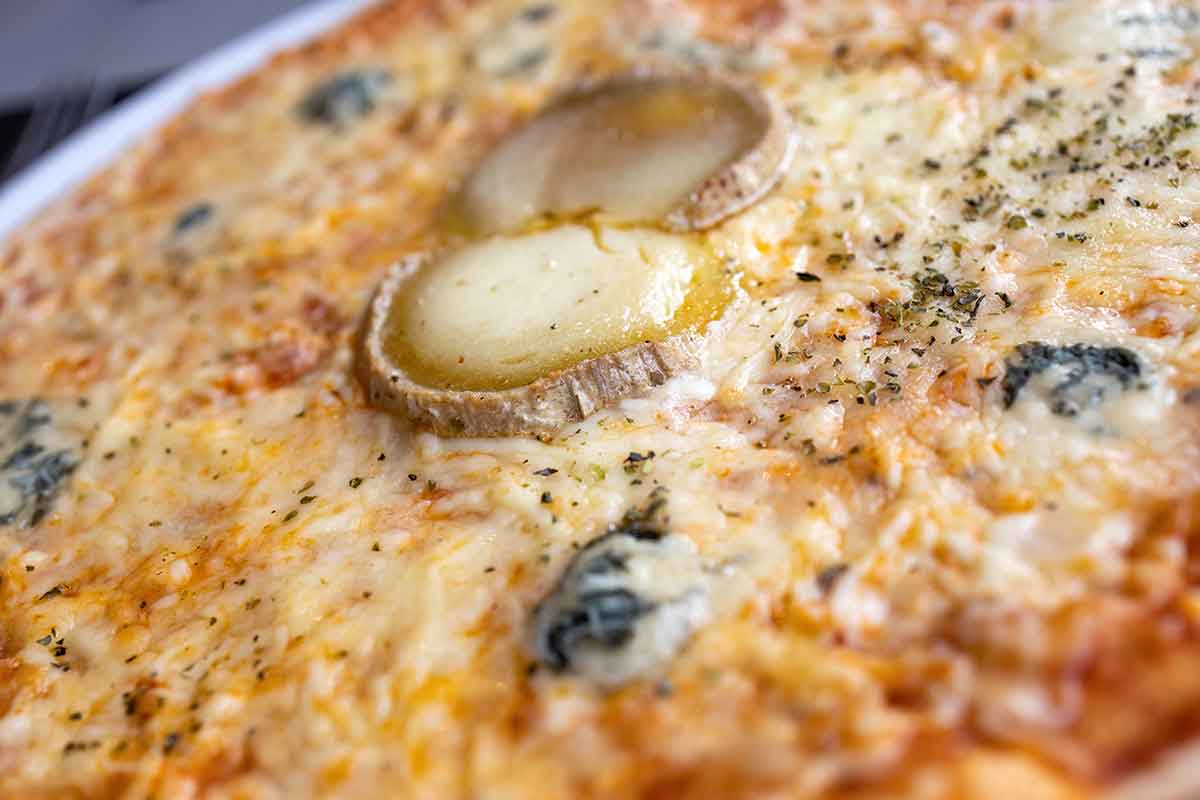
Is any gastronomy truly complete without the addition of some sort of flatbread topped with the tastiest concoctions?
Coca is the Spanish version of pizza, born in Catalonia.
There are massively different version of this dish and it can be served sweet as well.
Most commonly found at bakeries, the dough in this dish is extremely flavourful on its own.
The base mostly resembles to that of a focaccia, it is fluffy, filling and airy.
The dish has also great ties to the Spanish festivities making it typical for families to cook it together during the holidays.
You can never really go wrong with this Spanish food, whether topped with sausages/ veggies and cheese or with fruit and nuts.
There are versions where they pair fruit and meat together as a topping (shout out to pineapple pizza lovers).
4- Ibérico Ham
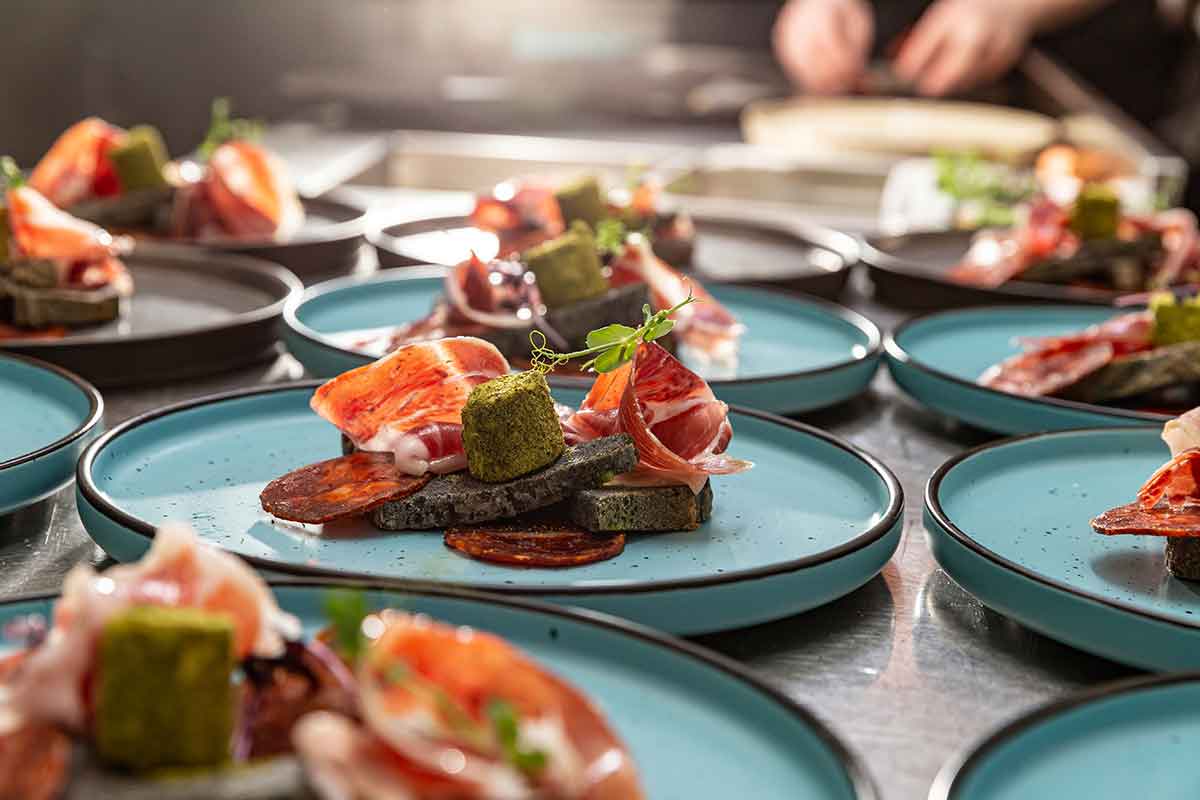
Now, this is truly one of the best tasting hams in the world and it is already well-known around the world.
There are lots of different versions of cured ham available around Spain but Ibérico takes the cake.
This item is expensive, so you might want to go for the best — Ibérico bellota.
The breed of pig is native to Spain and they are fed a special diet of acorns.
Because of the high fat content, this ham is unlike any other.
The meat is sliced super thin to fend off the decadence and it melts in your mouth like butter with hints of delightful nuttiness.
The texture is fantastic too because of the two-year curing process.
This is something you have to try when in Spain.
5- Morcilla
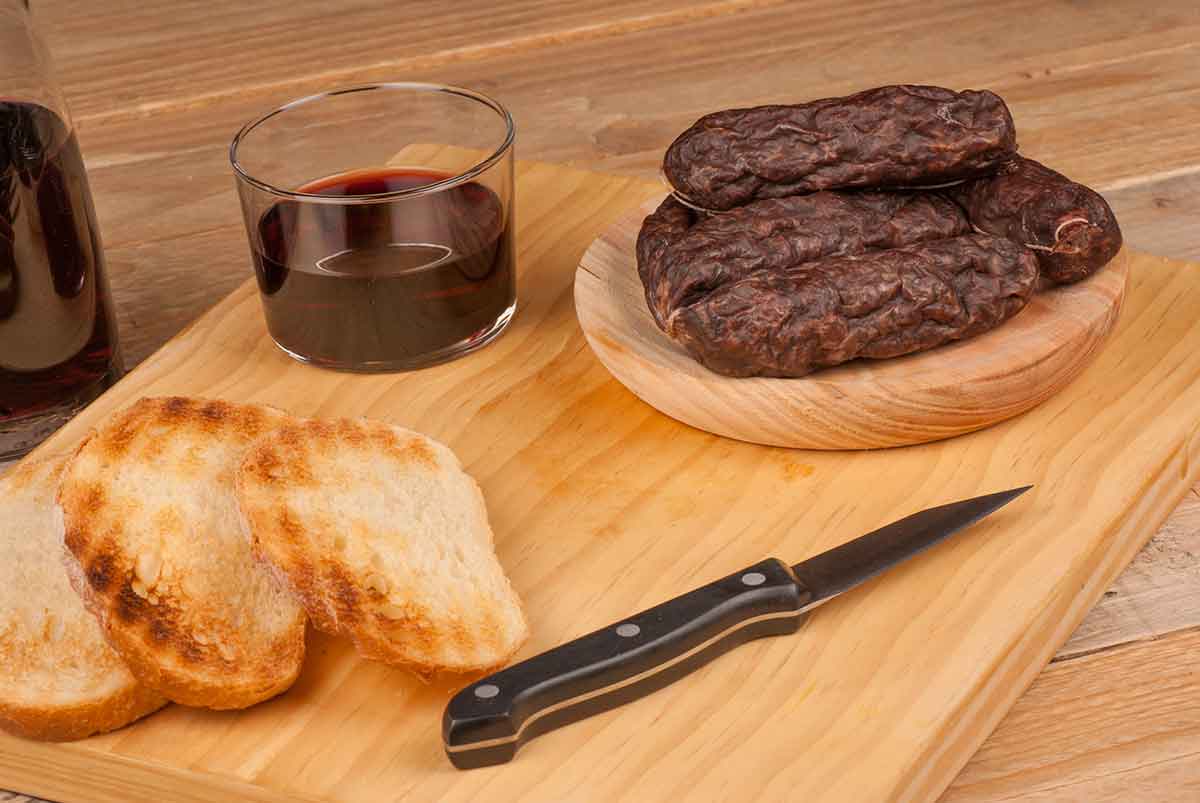
On the topic of pork, this is a truly unique sausage that is extremely underrated.
Morcilla is a blood sausage that was born in Spain but over the years many cuisines have adopted it.
If you know blood sausages, you know how unique their flavour is.
In Spain, there are numerous ways of making it but to be termed as morcilla, the sausage needs to have ground pork and pig’s blood.
Once the sausage is formed, it is boiled to coagulate the mixture and then cured.
I know it sounds off-putting but it is extremely delicious.
They are used in stews and soups but they taste the best when cut into thick slices and fried in olive oil.
The flavour is bold, salty in the best way and the texture of the filling is really satisfying.
6- Tortilla Española
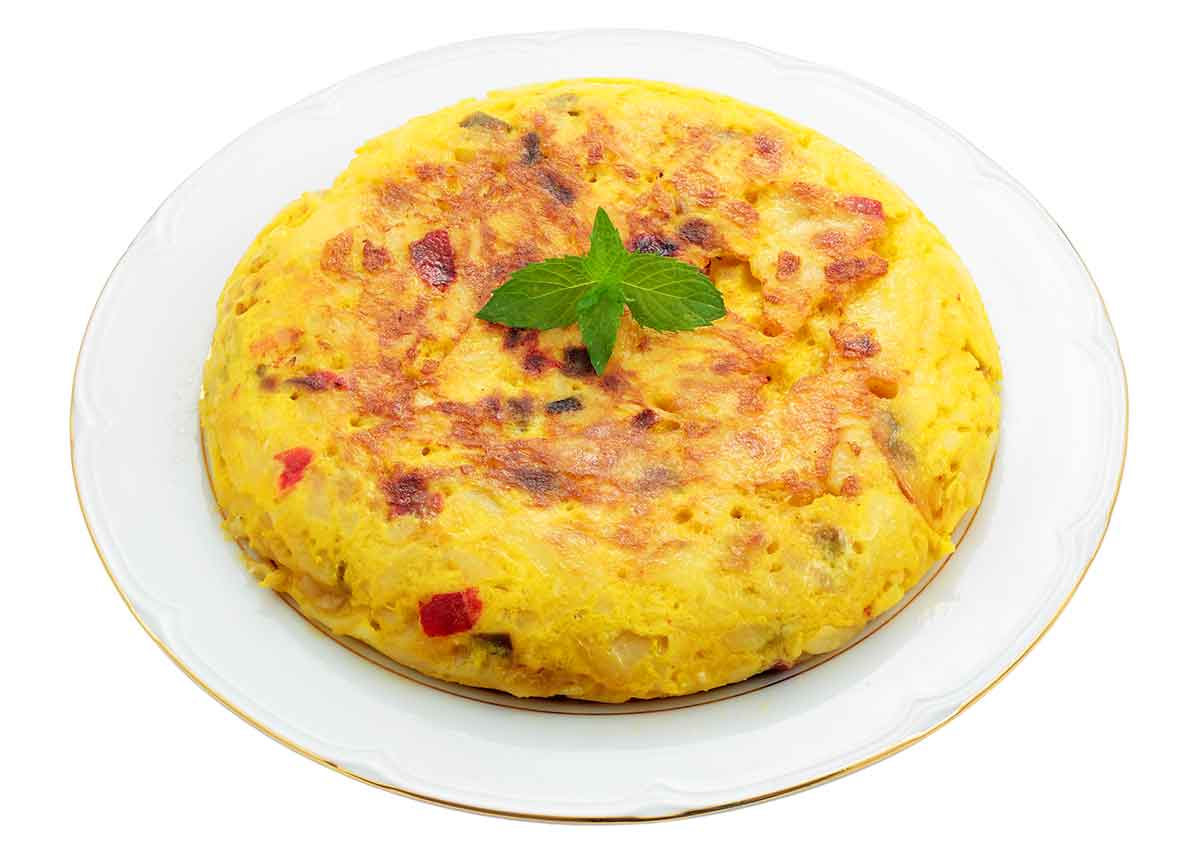
The name of this dish might remind you of the Mexican flatbreads and the look of it might take you back to Frittatas (as they are more common around the west).
It has similarities to its Italian counterpart but has nothing to do with the flatbreads.
Simply knows as tortilla in Spain, this dish is truly one of the best breakfast items ever.
You will start craving it once you have tried it.
Traditionally, it only takes three ingredients: onions, potatoes and eggs (lots of eggs).
Everything is cooked in a skillet and the result is this beautiful cake-esque omelette with layers of perfectly cooked eggs.
It is creamy, filling with a light aroma of olive oil and not as dry as frittatas (sorry Italy).
7- Patatas Bravas

Unpopular opinion, I think Spain is the one who perfected fried potatoes.
I love fries, just like any other person and while they are great, there is something about thick chunks of crispy potatoes that feels like a step above.
That is what Patatas Bravas are, fried chunks of potatoes.
Many places don’t even cut them into squares but instead just break boiled potatoes by hand and the result is supreme crispiness.
What makes this dish stand apart is the sauce, Salsa Brava.
It is a bright orange-coloured sauce that is spicy, tangy and has the fruitiness of paprika.
The sauce takes the potatoes to a whole another level and this dish is undoubtedly, one of the best tapas to have.
8- Angulas
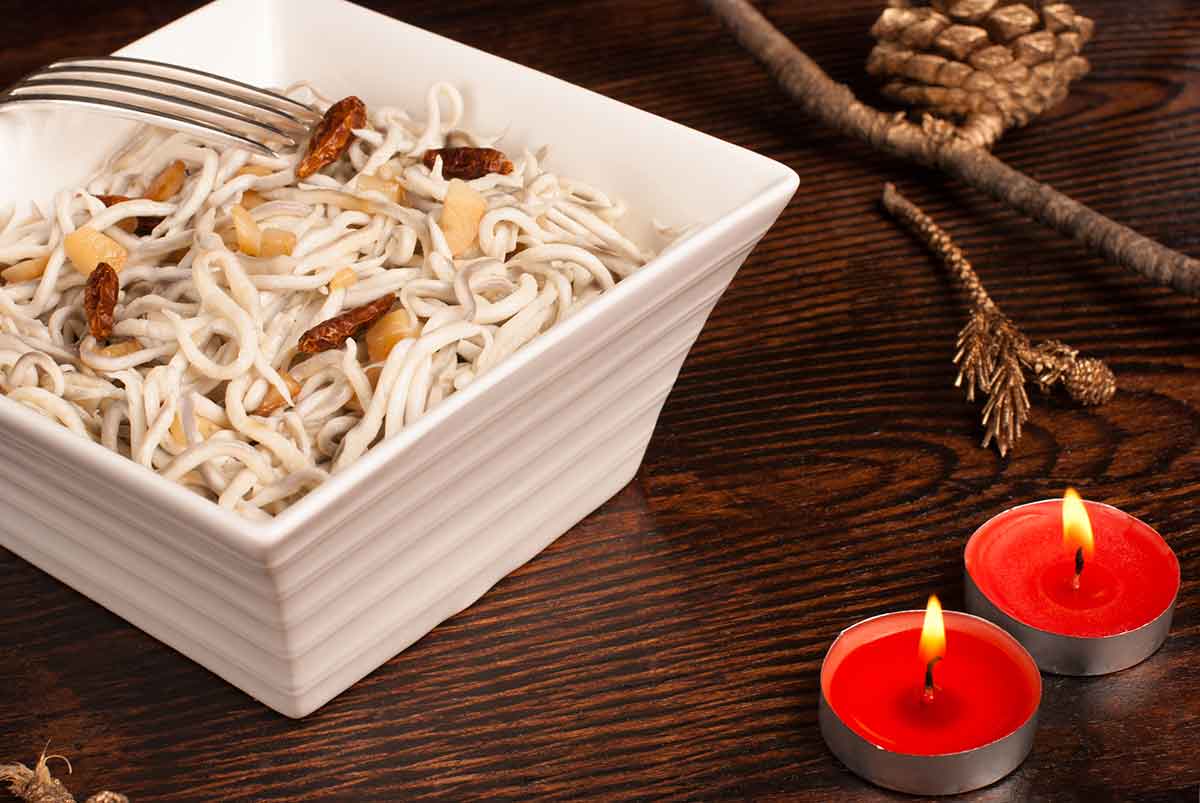
This is another dish that’s all about the ingredient and the ingredient here is baby eels.
Honestly, I am a not a big fan of them because they are super expensive and don’t taste much of anything.
That is not how the Spanish feel though.
It is considered as the caviar of Northern Spain and has become a delicacy that is enjoyed around the country.
They do cost a lot because of how difficult obtaining this seafood is but can be enjoyed in a small quantity.
They do have a fantastic, meaty texture and one of the best recipes comes from Bilbao.
They are fried with garlic and chilli peppers in olive oil which gives angulas more flavour too.
Love Spain? Read these posts:
- 27 Spanish Shows On Netflix
- 20 Fairytale Castles In Spain
- 30 Landmarks in Spain
- 20 Places To Visit In Spain In Winter
- 20 Best Beaches In Spain
- An Amazing Andalusia Road Trip
- 20 Things To Do In Ibiza
- 20 Things To Do In Tenerife
- 21 Things To Do In Lanzarote
- 21 Spanish Drinks To Try
- 20 Things To Do In Madrid At Night
- 20 Day Trips From Madrid
- Best Time To Visit Spain
- 20 Cities in Spain
- Renting A Car In Barcelona
- 20 Things To Do In Seville
- 20 Things To Do In Granada
- 20 Things To Do In Zaragoza
- 20 Things To Do In Palma
- 20 Tours In Spain
- 20 Things To Do In Alicante
- 20 Spanish Food / Dishes
- 20 Things To Do In Ronda
- 20 Things To Do In Cadiz
- 20 Thing To Do In Benalmadena
- 20 Things To Do In Torremolinos
- 20 Landmarks In Barcelona
- 5 Day Trips From Barcelona
- Barcelona Bike Tour
- 10 Things To Do In Bilbao
- 12 Things To Do In San Sebastian
- 10 Things To Do In Oviedo
- Storybook Village of Santillana del Mar
- 20 Things To Do In Gran Canaria
- 20 Things To Do In Barcelona At Night
- Christmas in Spain
- 20 Things To Do In Malaga
- 20 Things To Do In Marbella
- 20 Things To Do In Valencia
- Where To Stay In Valencia
- Ibiza At Night
- 20 Things To Do In Ibiza
- 20 Things To Do In Toledo
- Where To Stay in Barcelona
- 20 Things To Do In Segovia
- Where To Stay in Tenerife
- Where To Stay in Madrid
- Where To Stay In Mallorca
- Where To Stay In Ibiza
- 15 Things Spain Is Famous For
Principal Dishes in Spain
Full Plates make for full tummies.
9- Paella
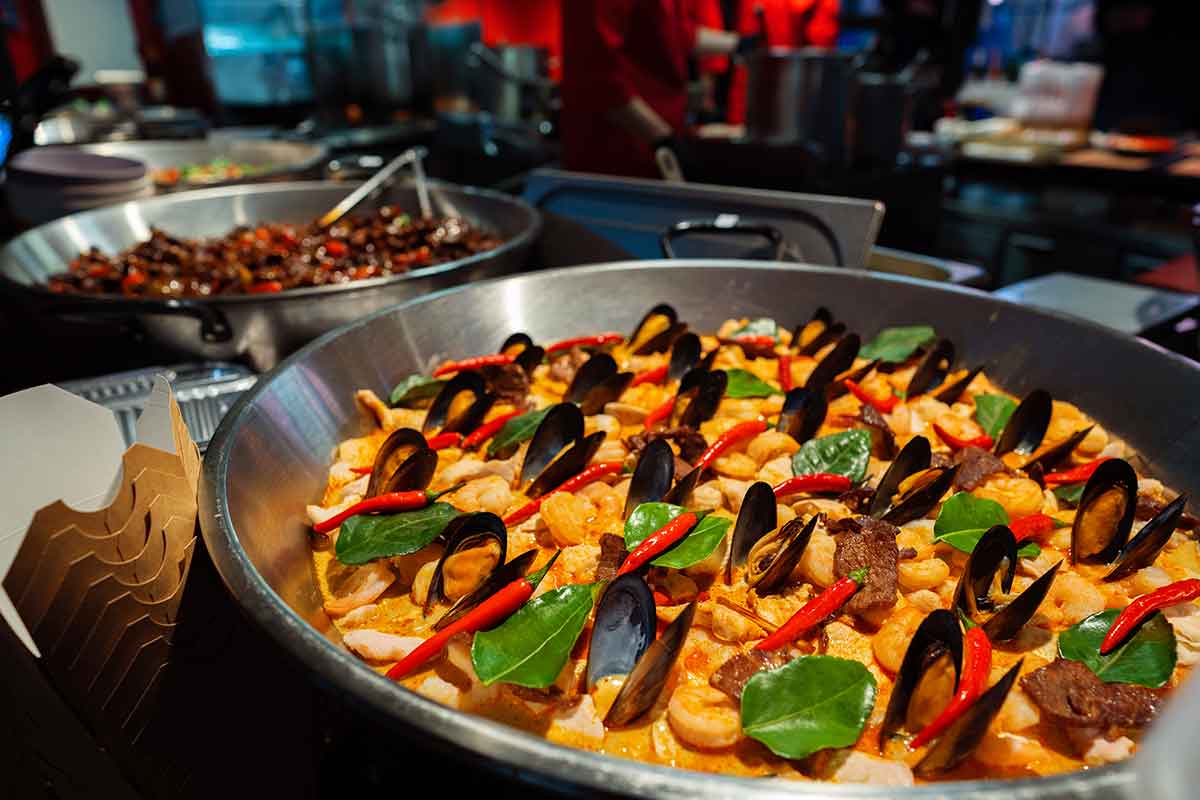
When you think about Spanish cuisine, this is the dish that usually pops up in your head.
Apart from tapas, paella is what Spain is known for and it is the national dish.
There are many different versions of the dish available throughout the country but the original was born in Valencia during the 18th century.
Paella also refers to the pan that is used to cook this rice dish and it is served in it too so people can feast upon the beauty of this dish.
The special pan is necessary as it helps achieve the bottom layer of toasted rice called socarrat.
The rice always uses mix of meats or seafood or both together and is enriched with saffron which gives the dish its iconic colour.
You simply cannot visit Spain without trying the paella.
Try to find the Valanciana version because many restaurants serve the dish without socarrat, which is a no-no from me.
10- Gazpacho
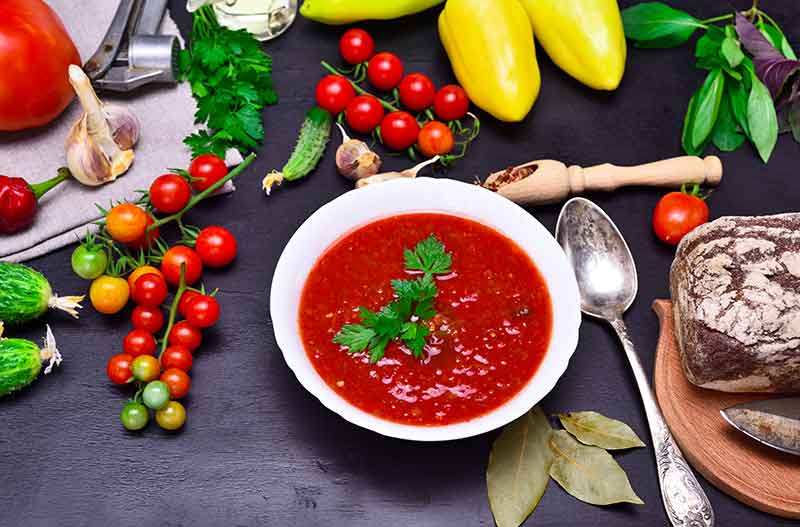
Gazpacho is one of the first dishes that changed the world’s perception of soups.
Now, extremely familiar around the world, this cold soup might be weird to some palates but it tastes gorgeous.
Most people think of gazpacho as a tomato soup but the original version that was born in Andalusia doesn’t even use tomatoes.
The idea was to blend some staples like bread, vinegar and garlic to make a cold slurry that could help beat the heat.
Over the years, gazpacho has refined itself into a fantastic summer dish that uses tons of raw veggies and fruits making it nutritious and refreshing.
Tomato gazpacho is super iconic but you might want to try different flavours like watermelon and raspberry gazpacho.
11- Migas
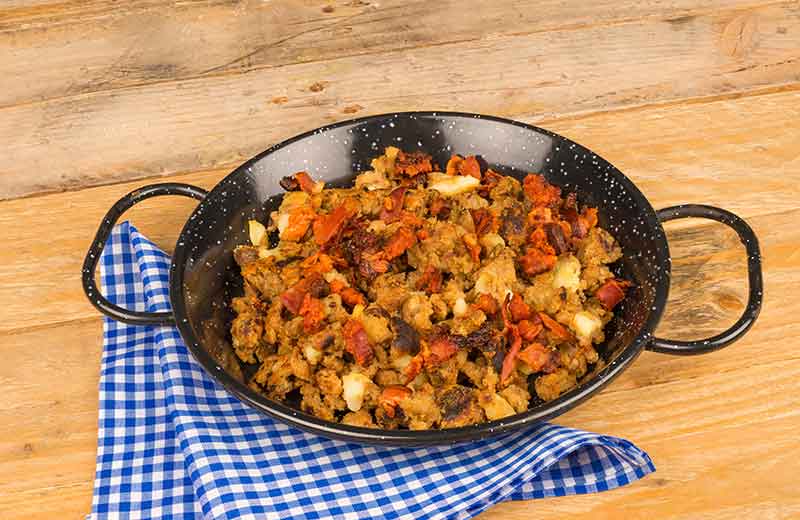
Welcome to one of the best tasting dishes you will ever have.
Migas, like tortilla, is something that has significance in Mexican cuisine and while the basics might seem similar, the two dishes are really different.
Migas, more than just a dish, is a style of cooking.
In order to salvage old bread, farmers and peasants came up with this method of reducing whole bread to small pieces and then flavouring it with whatever they could find.
Different regions in Spain make this dish differently but the result is always an extremely tasty hash.
Most commonly, the crumbs are flavoured with some sort of fat, garlic and sausages.
In Aragon, migas are served with grapes and in Andalucia, they are topped with fried eggs.
So, it really comes down to your personal preference but you need to try at least one version of this dish.
12- Escalivada
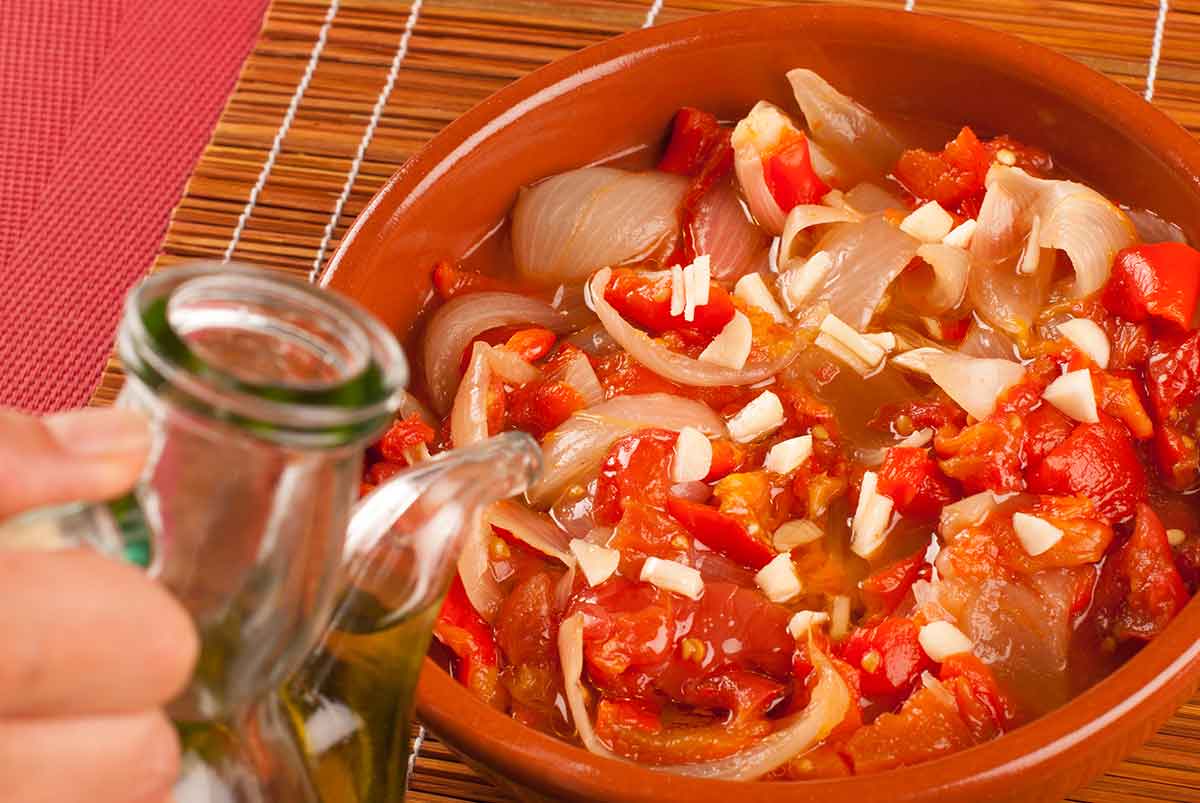
Escalivada is another dish that can be prepared in numerous ways but the result being always delicious.
Technically, this is considered a side dish or a tapa but honestly, this dish works so well as a main for many people.
The vegetarians are going to be really happy as the preparation of veggies in this dish can go head to head with any meat.
In Catalan, escalivada means ‘to roast in the embers’.
Just as the name suggests, different kind of veggies are grilled over charcoal or wood fire until caramelised, then they are peeled and dressed with salt, olive oil and sherry vinegar.
The veggies are always super flavourful, tender and scrumptious.
The most common combination of this dish is done with red peppers, onions and eggplants, which is to die for.
13- Calçots with Romesco
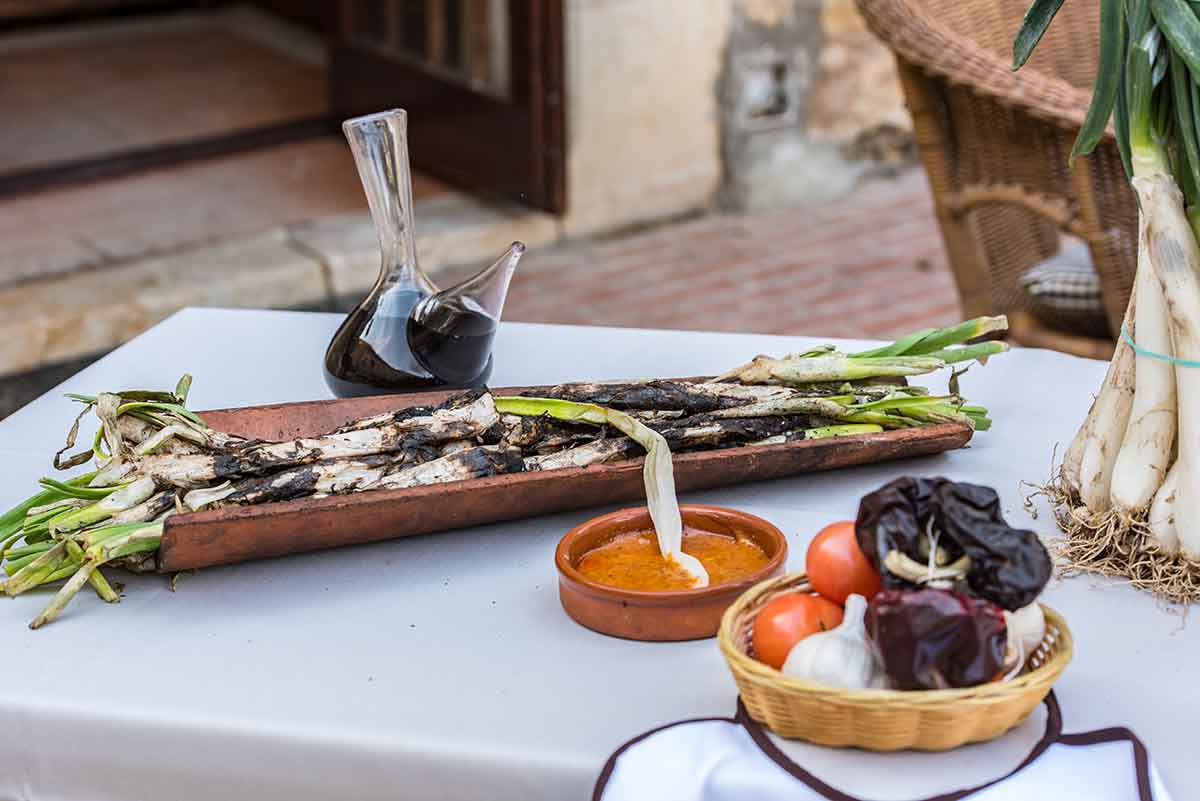
Going with the veggie feels, this is another vegetarian classic in Spain.
If you love leeks or spring onions, you are about to have a new favourite.
Calçots are from the same family but are way less pungent.
They are sweeter in flavour and when charred, offer an extremely juicy and flavourful texture.
During the spring season, you would find these being roasted over open flames, most commonly in Catalonia.
They are served with Romesco sauce which has a prominent flavour of roasted peppers, garlic and almonds, it is a beauty in itself.
The combination of charred calçots with the fruity, smoky romesco sauce is a delight and a must have.
14- Pisto
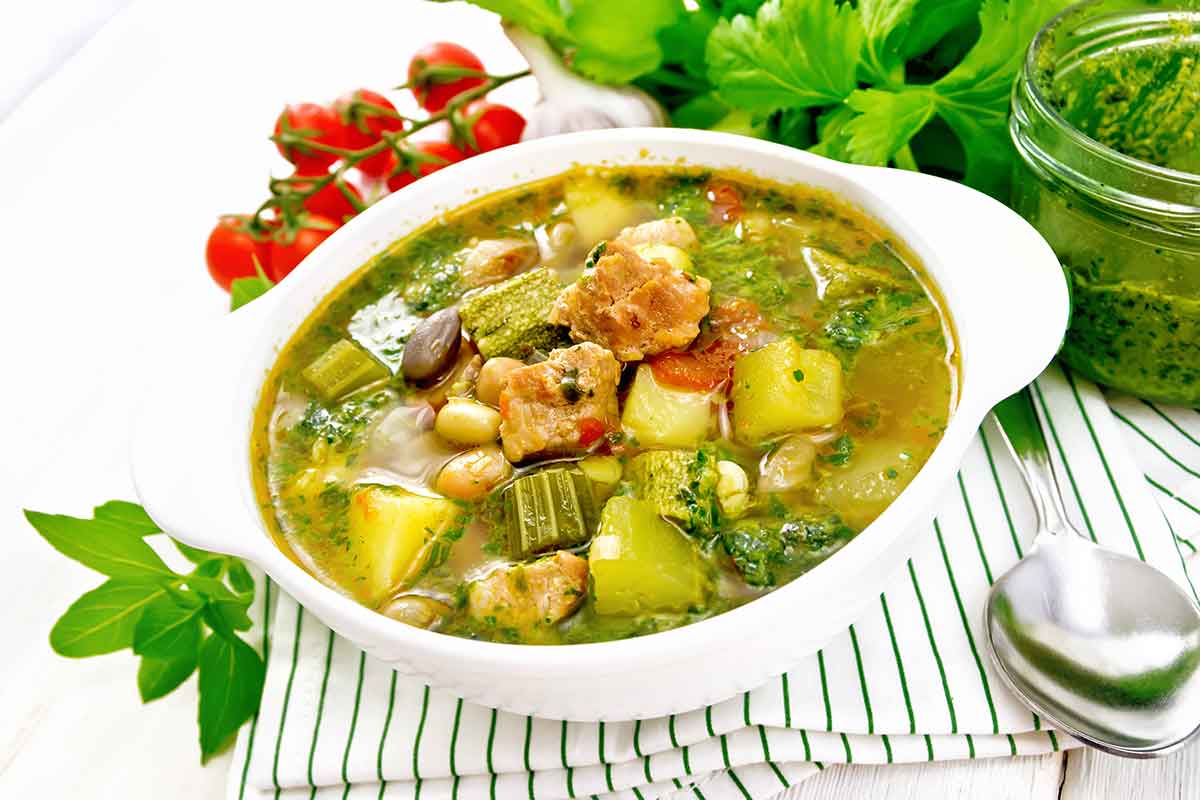
Spain really does have a good relationship with its veggies.
This dish is all about the medley of good quality vegetables stewed together until all the natural flavours are released to make this beauty.
Dating back to the Moorish era in Spain, this dish was developed in the city of Murcia.
It is often compared to the French ratatouille but it is much less refined.
The key is the use of seasonal vegetables with some excellent olive oil.
The stew doesn’t even use any additional liquid, the ingredients used — eggplants, zucchini, peppers, they all release their own moisture when cooked low and slow, which then further caramelises everything beautifully.
You will find pisto in most of the restaurants and it is often served with Manchego cheese or with an egg on top.
15- Fideuà
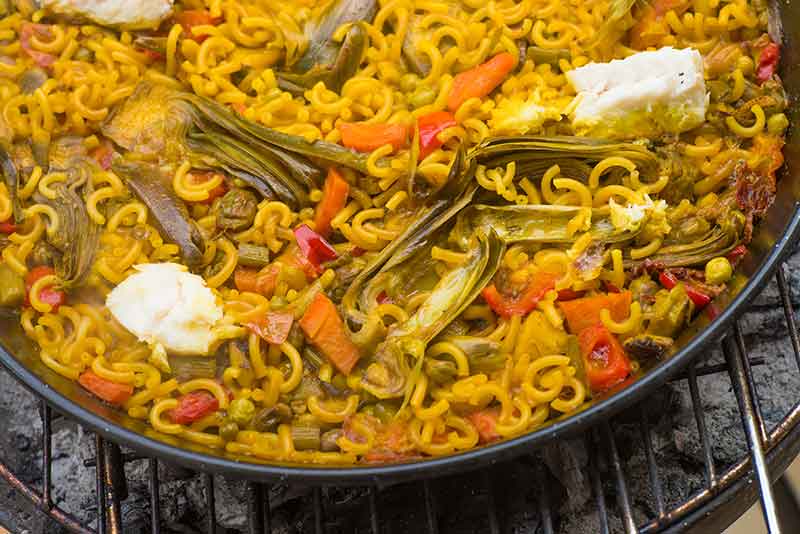
I started off listing the main dishes with Paella but it is time we shed some light on its lesser known counterpart.
Fideuà is extremely similar to Paella but it uses short, thin pasta instead of rice.
Even after being so close to one of the most famous Spanish dishes, this dish has a great story behind it, tastes equally fantastic and therefore, it is a definitive must try.
The dish was born on a fishing vessel when a cook tried to make paella but didn’t have rice on hand or some say that he had omitted rice on purpose while serving the captain, in order to save rice for the rest of the crew.
Fideuà is traditionally made only with seafood, unlike Paella and has a beautiful bite to it.
Spanish Desserts – Savour The Sweets
16- Basque Cheesecake
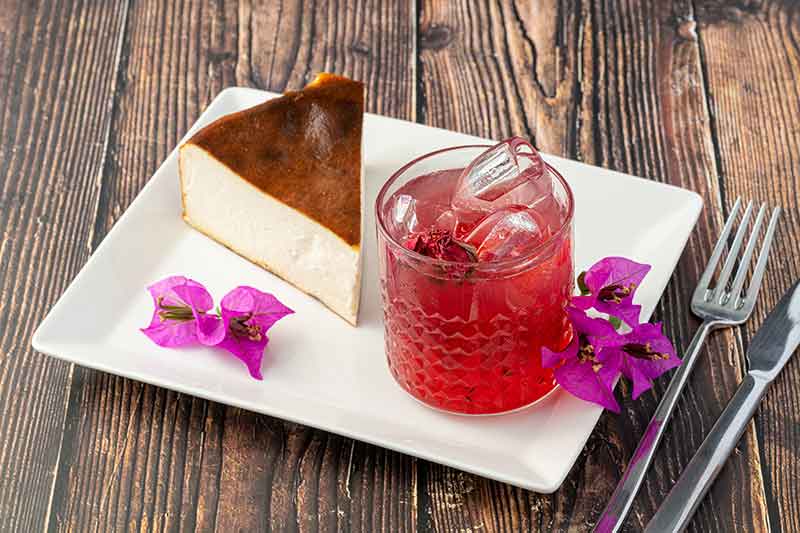
If you enjoy cheesecakes, wait till you try this one because this is what dreams are made of.
I am a massive fan of cheesecake and eating in Basque truly changed how I enjoy them.
Often referred to as the “burnt cheesecake”, this dish is the perfect combination of caramelised, creamy and sweet.
The preparation of this dessert is much easier than that of the American cheesecake.
While both are really different I usually opt for the Basque version.
Here, the idea is to basically burn the exterior of the batter which then serves as the crust because this cheesecake is crustless.
Is it much more creamy and decadent but less dense than a normal cheesecake.
And I absolutely adore the slight burnt flavour you get from the caramelised top.
17- Leche Frita
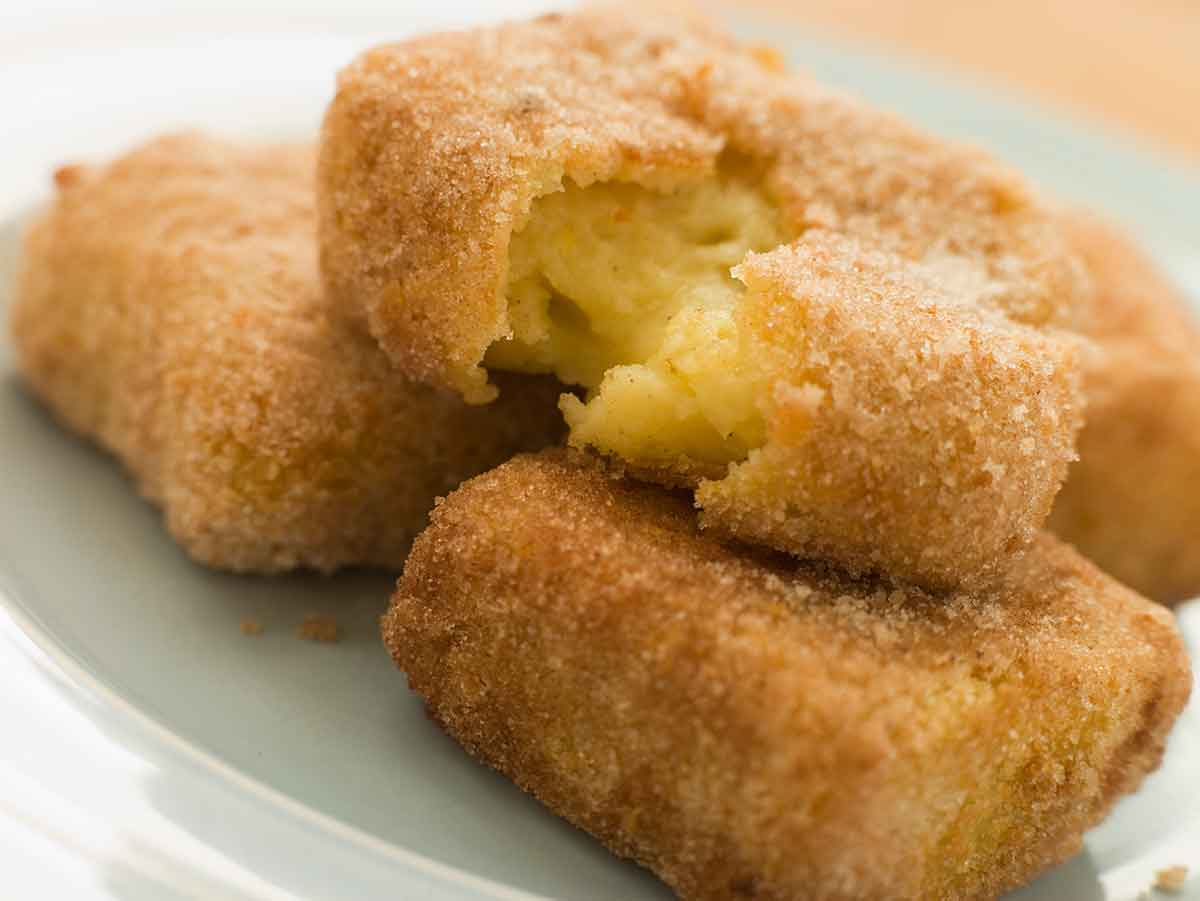
When directly translated, this dish might sound a bit odd.
‘Leche Frita’, fried milk, sounds weird but the Spanish are not just frying milk as it is.
I had my doubts about it but after trying it I understood why the Spanish love this dessert so much.
It is basically custard with a crispy twist.
The milk is enriched with different flavours, prominently cinnamon and then cooked more than a normal custard.
Essentially, a firm milk pudding like texture is achieved and then cooled down until it can be cut.
The pieces of “milk” are then coated in a batter of flour and eggs and then fried to perfect golden brown.
The texture is firm but creamy with a crunchy exterior and leche frita is one of the best carriers for ice-cream.
The combination is a fantastic way to end any meal or to satisfy any sweet tooth.
18- Tarta De Santiago
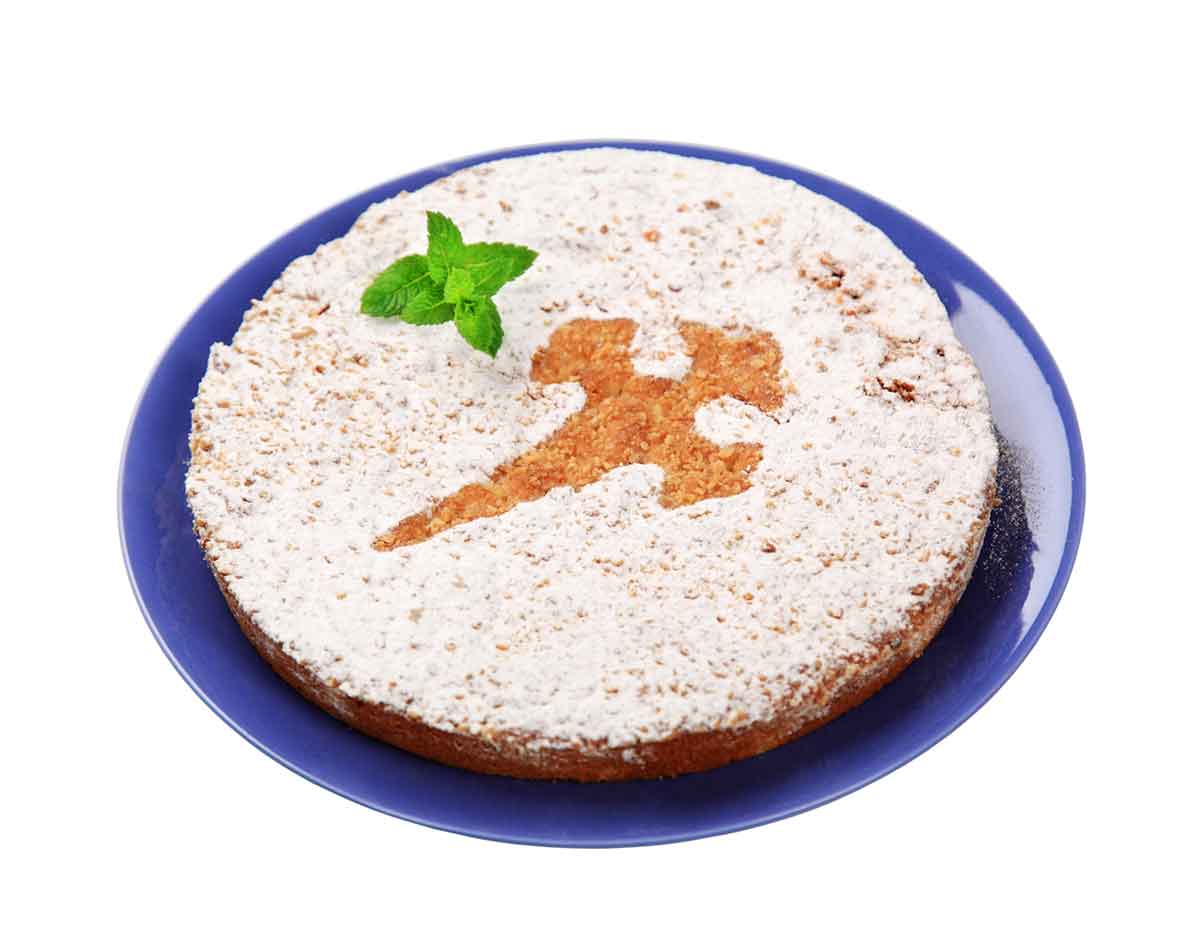
Easily identifiable due the St. James cross stencilled on the top with powered sugar, this dessert tastes as good as iconic it is to the Spanish culture.
While it looks quite basic and average, just one bite would blow your mind.
The sweetness of this cake and the moist texture are both so well put together.
The most important ingredient here are almonds and as it uses almond flour, it is naturally gluten free, which some people would be really happy about.
The dessert is typical in Galicia but was born in Santiago de Compostela.
People often enjoy this cake victoriously after completing the pilgrimage walk.
You don’t have to walk long ways just to eat it though.
Just go and try it anywhere you can, you won’t be disappointed.
19- Turrón

It is time for the one of the most classic Spanish holiday dessert.
Especially during Christmas, you will find versions of turrón all over Spain.
It was born in southern Spain but has taken over the country over the past millenniums.
The basic nougat confection is made just with a mix of honey, almonds and egg whites, most commonly it uses the Marcona variety of almonds.
Chunks of almonds are used to make a hard candy whereas ground almonds are used for achieving a more soft and chewy texture.
Turróns are extremely addicting and it is really hard to stop eating them.
Over the years, many different flavours of this addictive nougat has come into play and you can buy bags of them being sold around cities just like you can find chocolate being sold in Belgium.
20- Pestiños
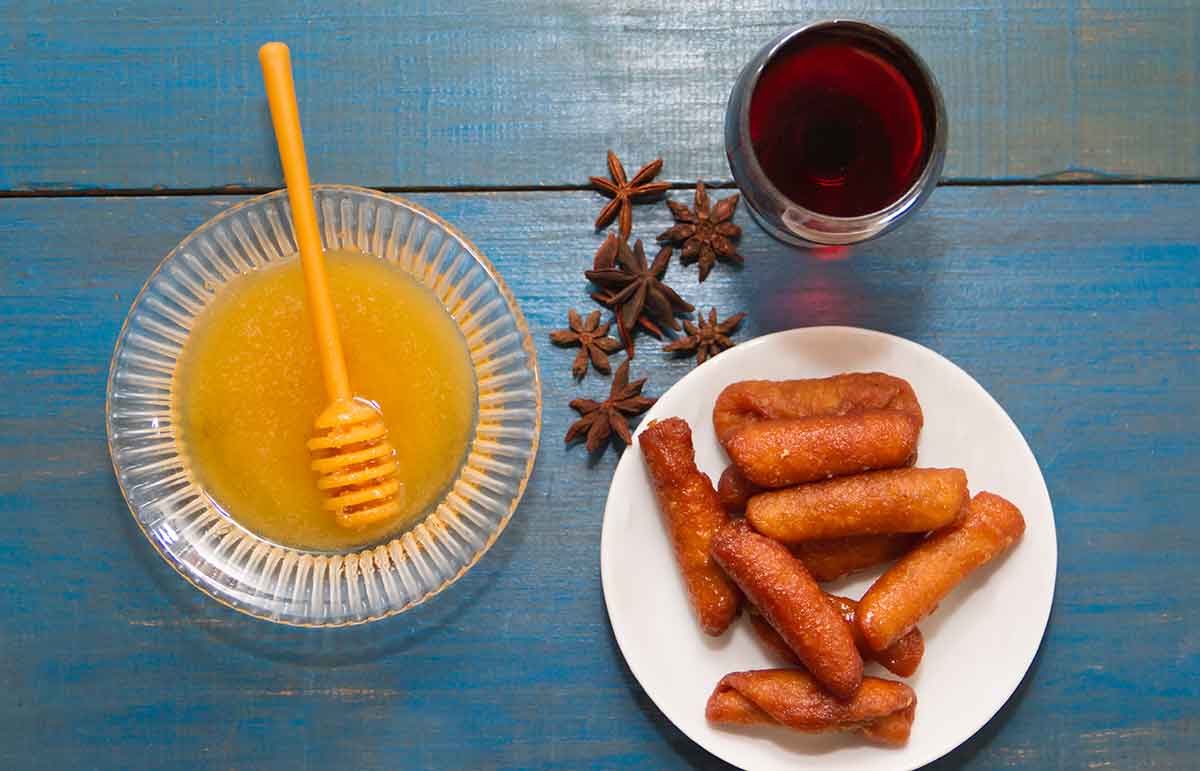
Now for another festive dessert.
Churros is a fried dough dessert that everyone loves but I want to suggest an underrated option that is much better.
Pestiños is a traditional dessert popular during Christmas and Easter.
These twisted fritters are commonly flavoured with aniseed and orange zest (classic combination for this dessert), but they get their unique flavour due the addition of ingredients like olive oil and sweet white wine in the batter itself.
While you can enjoy them with some different toppings or condiments, I suggest you to try them bare as they hold a ton of flavour by themselves.
And there it is, a list of some of my favourites from the Spanish cuisine.
I have suggested these dishes based on my personal taste.
What you have to do, is to go out and find what you enjoy because Spain has a lot to offer in terms of food.
Usually, people only talk about or travel to major cities like Barcelona and Madrid.
While those cities are nice, the real Spanish treasure lies around them, so give them a shot too and have fun eating.
Feeling hungry? Read these posts:
Plan Your Trip

Rent A Car – Find the best car rental rates at Discover Cars. They compare car hire companies to provide you with the best deal right now.

Find A Hotel – If you’re curious about this article and are looking for somewhere to stay, take a look at these amazing hotels.

